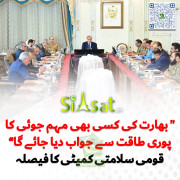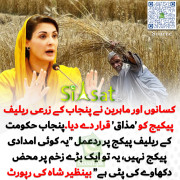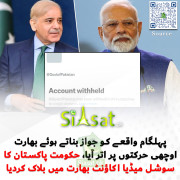Night_Hawk
Siasat.pk - Blogger
15 FOODS TO FIGHT ANEMIA
1. Red Kidney beans: Rich in dietary Iron and phytochemicals like flavonoids.
2. Tofu: Low in Sodium, high in B-vitamins, Iron, Isoflavones, Genistein and Diadzein.
3. Oyster: Low glycemic index, rich in antioxidant nutrient Zinc and Vitamin B12.
4. Almond: Rich in Iron, Manganese, Riboflavin, Copper, Vitamin E and Omega-3-fatty acids.
5. Prune Juice: Dense in B-vitamins, Iron, Potassium, Magnesium, Boron and dietary fiber.
6. Romaine lettuce: Vitamins (A,B1,B2,C), Folate, Manganese, Chromium, dietary fiber, Potassium, Iron, and Phosphorus.
7. Blackstrap Molasses: Rich source of Iron, Potassium, Calcium, Selenium, Vitamin B6.
8. Spinach: Rich source of Calcium, Vitamins A, B9, E and C, Iron, fiber and Beta carotene.
9. Apricot: Rich in Beta-carotene, fiber, Vitamin A, E, and Iron.
10. Raw Broccoli: Vitamins (C, K, A, B6), Potassium, Selenium, Manganese, Tryptophan, and Phosphorus.
11. Beet root Juice: Rich in Iron content. Help in repairing and reactivating red blood cells.
12. Watercress leaves: Rich in fiber, anti-oxidants, vitamin C, beta-carotene, folate, potassium, calcium, phosphorous, iron and iodine.
13. Pomegranates: Rich source of Iron and Vitamin C.
14. Garlic: Rich in Iron. Effective in treatment of Sickle cell Anemia.
15. Honey: Rich iron content. Copper and magnesium increase hemoglobin levels.
http://www.healthdigezt.com/15-foods-to-fight-anemia/
1. Red Kidney beans: Rich in dietary Iron and phytochemicals like flavonoids.
2. Tofu: Low in Sodium, high in B-vitamins, Iron, Isoflavones, Genistein and Diadzein.
3. Oyster: Low glycemic index, rich in antioxidant nutrient Zinc and Vitamin B12.
4. Almond: Rich in Iron, Manganese, Riboflavin, Copper, Vitamin E and Omega-3-fatty acids.
5. Prune Juice: Dense in B-vitamins, Iron, Potassium, Magnesium, Boron and dietary fiber.
6. Romaine lettuce: Vitamins (A,B1,B2,C), Folate, Manganese, Chromium, dietary fiber, Potassium, Iron, and Phosphorus.
7. Blackstrap Molasses: Rich source of Iron, Potassium, Calcium, Selenium, Vitamin B6.
8. Spinach: Rich source of Calcium, Vitamins A, B9, E and C, Iron, fiber and Beta carotene.
9. Apricot: Rich in Beta-carotene, fiber, Vitamin A, E, and Iron.
10. Raw Broccoli: Vitamins (C, K, A, B6), Potassium, Selenium, Manganese, Tryptophan, and Phosphorus.
11. Beet root Juice: Rich in Iron content. Help in repairing and reactivating red blood cells.
12. Watercress leaves: Rich in fiber, anti-oxidants, vitamin C, beta-carotene, folate, potassium, calcium, phosphorous, iron and iodine.
13. Pomegranates: Rich source of Iron and Vitamin C.
14. Garlic: Rich in Iron. Effective in treatment of Sickle cell Anemia.
15. Honey: Rich iron content. Copper and magnesium increase hemoglobin levels.
http://www.healthdigezt.com/15-foods-to-fight-anemia/

































